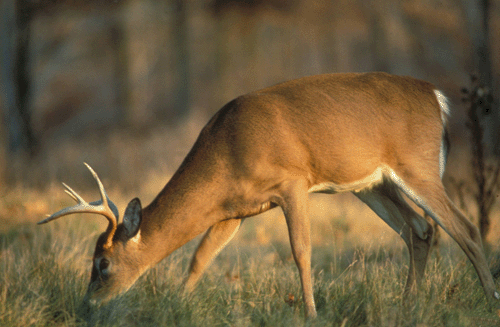The purpose of the Wildlife program is to manage, conserve, protect and enhance fish and wildlife habitat on the WHFRTC land and to ensure that the management plan and military training are accomplished concurrently. This program will also enhance the natural biological diversity and abundance of the native flora and fauna and promote the use of this land for wildlife related recreation.
Wildlife Information
Because of the diversity of habitats on the area, a wide range of species is present or uses the area in their migration. The training area has self-sustaining populations of whitetail deer, eastern wild turkey, gray and fox squirrel, swamp and eastern cottontail rabbit, bobwhite quail, woodcock, raccoon, bobcat, coyote, red and gray fox, muskrat, beaver and wood duck. Many “non-game” species such as short eared owls, long eared owls and the Bell’s Vireo can be found on the area.
The resident goose population attracts many migrating waterfowl such as Canadian and snow geese and most of the ducks that can be found in the Mississippi flyway such as mallards, blue and green wing teal, gadwalls, ring necks and others. Dove, common snipe, many and various raptors, shore birds and a variety of songbirds are also present during the year. With our assistance, the Kentucky Ornithological Society is maintaining a species list on the area as they conduct their surveys. Over 90 species have been recorded. Breeding populations of short eared and long eared owls can be found on the area as well. The wetland complexes and various lakes and ponds provide a diverse and very productive aquatic ecosystem. Some of the more common species of fish found are large mouth bass, red ear sunfish, bluegill, black and white crappie and channel catfish.
Generally hunting will follow the Kentucky Department of Fish and Wildlife Resources state-wide seasons. Depending on the training requirements of W.H.F.R.T.C., hunting and fishing areas will be open for outdoor recreation on a year round basis, with the exception of waterfowl refuge areas and other critical wildlife habitats. The waterfowl refuge areas are closed from October 15 through March 1 each year. Major user groups will be anglers, deer and turkey hunters, upland game and waterfowl hunters and outdoor wildlife viewers.
